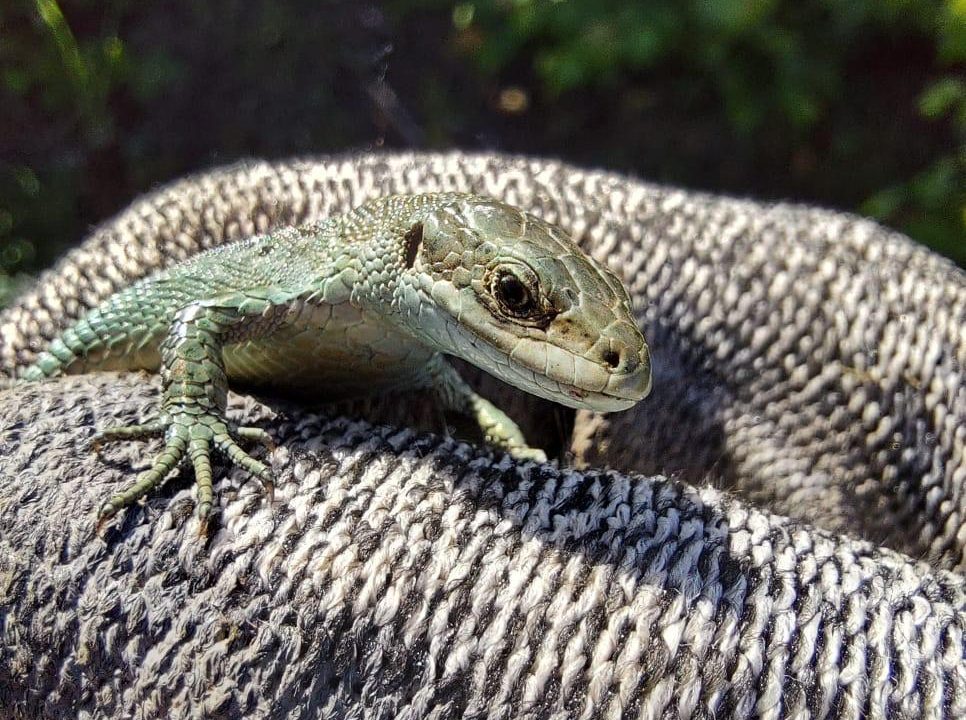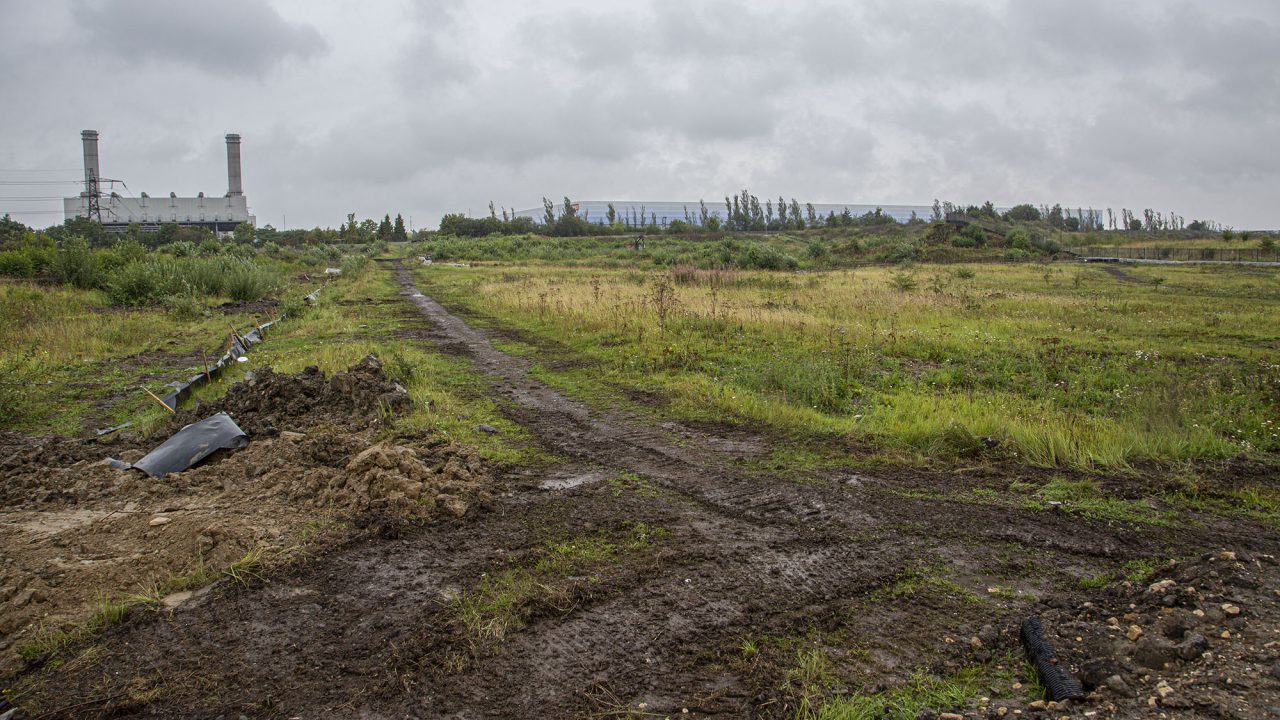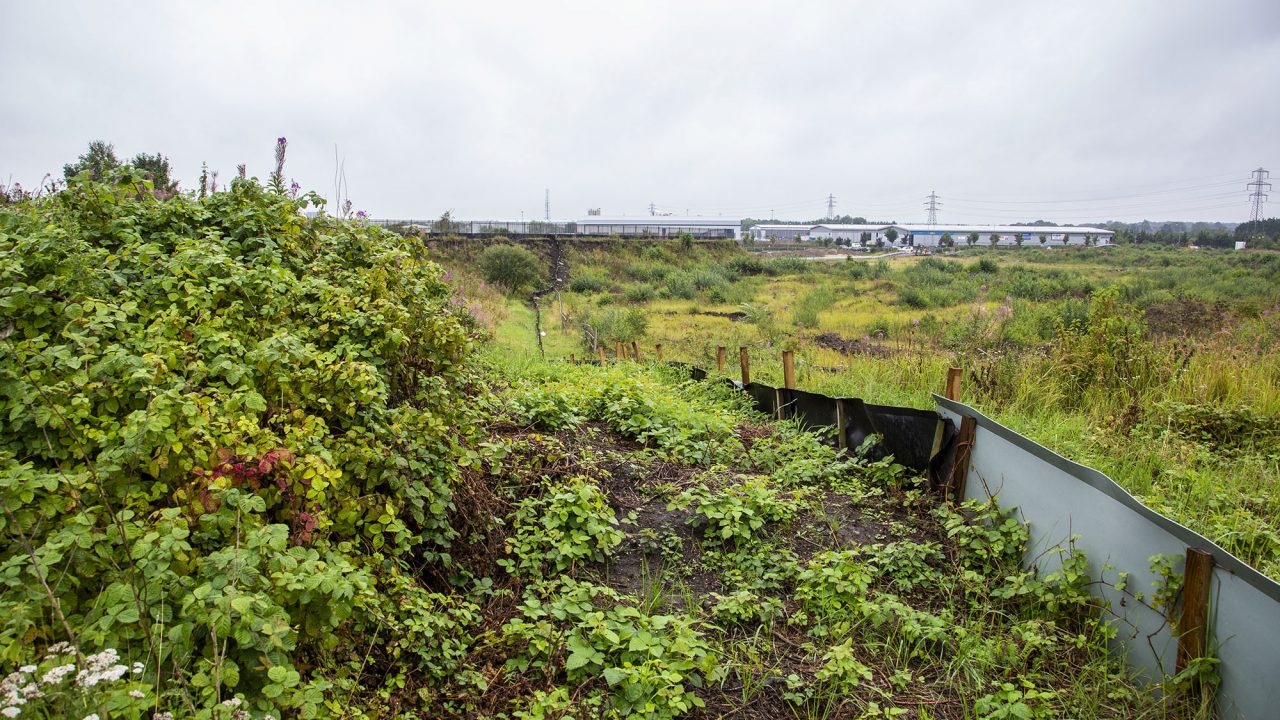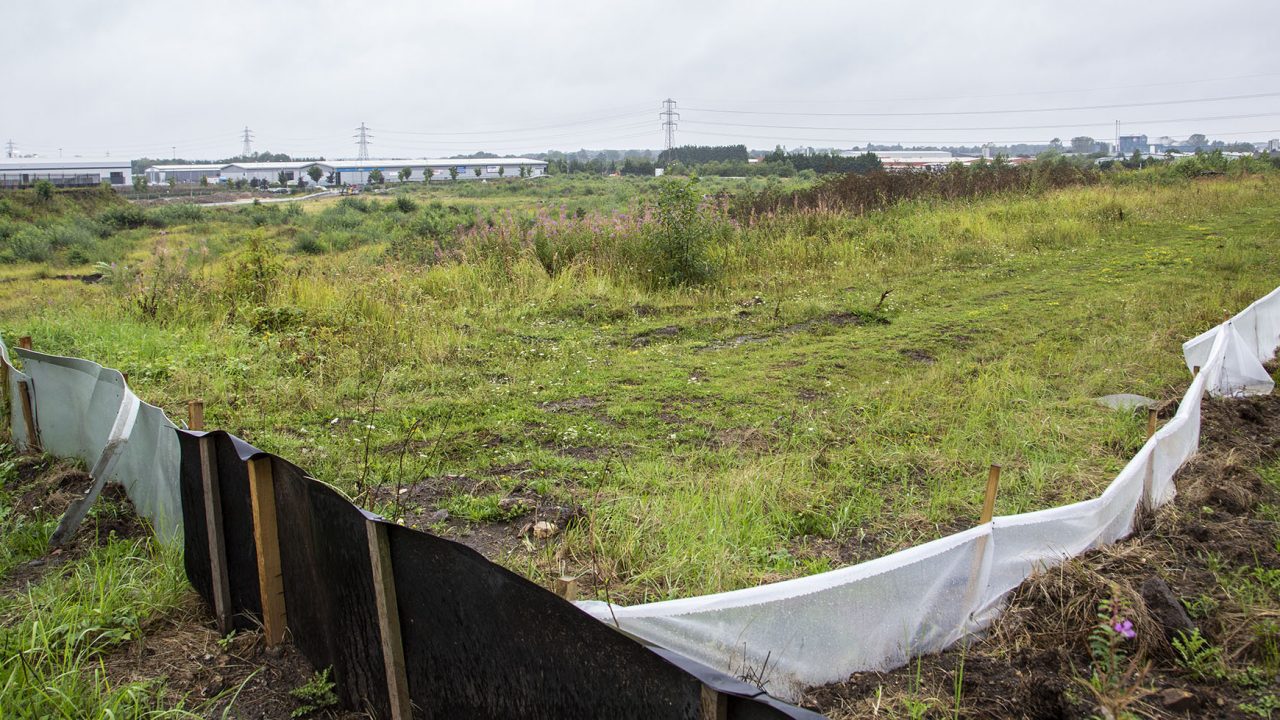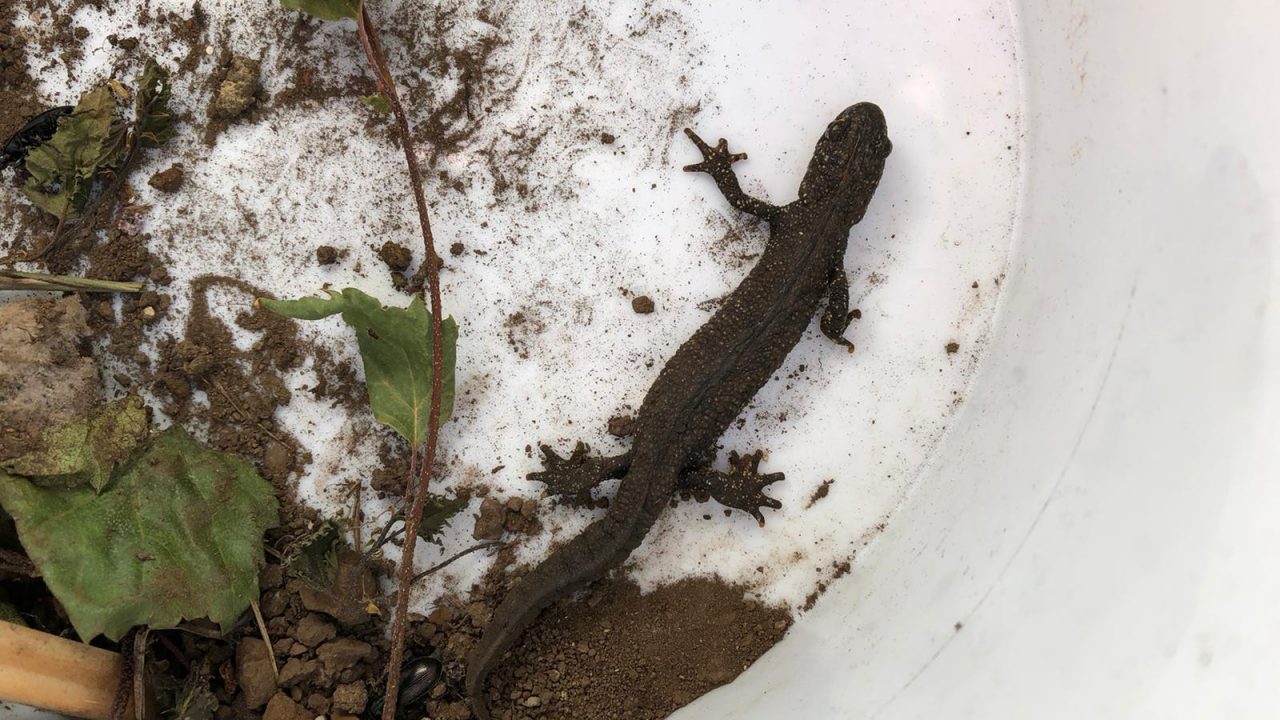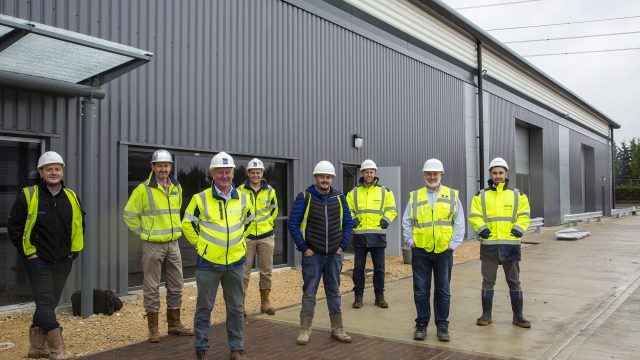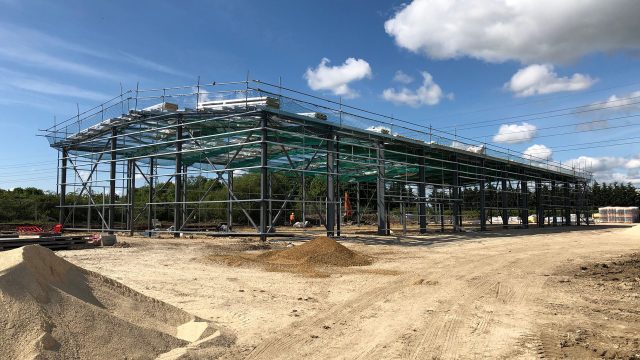Centrix Business Park – Ecology
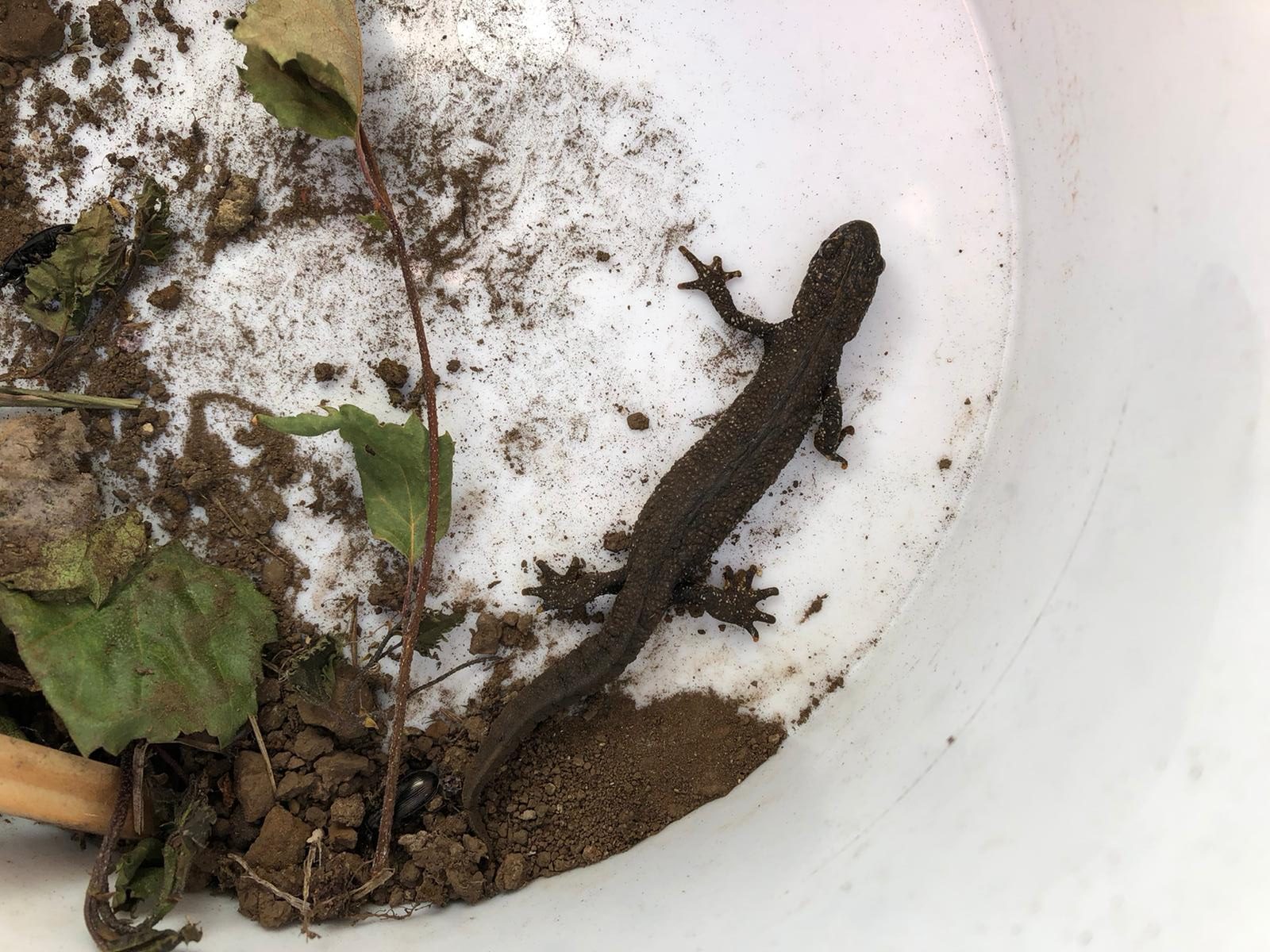
Centrix Park developers protect resident Great Crested Newts
Centrix Business Park comprises a 39 acre (15.8 hectare) mixed use, commercial development encompassing industrial warehousing, food manufacturing and trade counter operations on a private maintained estate.
Whilst the majority of Centrix Business Park has already been developed for end users or is under construction, there are still opportunities on Plot A which comprises c.15 acres of land suitable for design and build opportunities up to 285,000 sq ft.
Clowes Developments has been working alongside their consultants for the last 9 months to bring Plot A forward through the planning process for development. This part of the site has stood vacant since British Steel vacated the site several years ago. Through the efforts of Clowes Developments and their Consultant Team including IMA Architects, Millwards, RammSanderson Ecology, Ian Stemp Landscape Associates & Lennon Transport Planning, Plot A is now ready to take occupier requirements.
Site history
The town of Corby is located on a huge bed of ironstone and was once the home of a thriving steelworks which took over much of the town’s landscape. In 1980 British Steel closed their former plant and a large amount of the steel works were demolished with buildings removed from the land. The area which makes up Plot A was a railway siding in a former life. Due to the time elapsed since the land was last in full use the site became a thriving hotbed of ecology and was classed as a high value open mosaic habitat and became home to Great Crested Newts (GCNs) which are a protected species.
Being aware of the historic presence of GCNs and the high value of the open mosaic land, Clowes Developments instructed trusted consultants RammSanderson Ecology to advise on how to bring the site forward. Working alongside the wider consultant team, RammSanderson were able to provide advice on the best solution to bring the site forward and work within the constraints. Having already established a newt receptor area some years ago, RammSanderson undertook monitoring and trapping to determine the population size and influence further the design of the receptor area. The design incorporates wet ponds, dry ponds and marshy areas for the GCN to thrive in.
Protection and conservation of the GCN population on this site has always been a primary focus of our efforts as GCNs are strictly protected by British and European law. As a protected species it is an offence to kill, injure, capture or disturb them at any point through work.
Please see picture below for one of newts which were captured as part of the trapping process by our Ecologists RammSanderson.

Working under licence from Natural England, RammSanderson Ecology lead on this job by Nick Sanderson undertook the trapping and translocation of the GCNs. Following a successful trapping process the GCN population were successfully trans-located into the specially designed pond in the north east corner which allows for Clowes Developments to progress with site investigation works whilst under the watchful eye of RammSanderson Ecology to ensure any potential disruption was kept to a minimum.
During the trapping process it was not just GCNs which were found on site, common lizards and common newts were also recorded. As a result of this work, circa 15 acres of developable land has now been released on Plot A, with Clowes Developments having secured planning permission for a 165,000 sq ft industrial/distribution unit which is now fully consented and can be delivered within 10 months.
Further, Clowes Developments have created a 4 acre conservation scheme which will add an additional 2 wet ponds and further habitats for GCNs in addition to the already constructed receptor area of the site.
The remainder of the site will be plateaued ready for future development but in the meantime it will be utilised by Northampton University working along RammSanderson Ecology, in order to study the soils from the open mosaic site which our construction have a unique profile due to the past uses across the site.
It is anticipated that the initial earthworks will begin on the site in the Winter of 2020.
